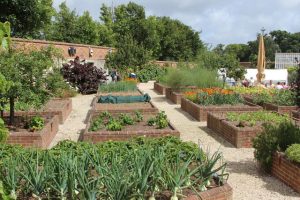Adding raised beds to a garden is a great idea. The elevated structures yield more produce than row crops. Plants are more vigorous during the early season due to the soil warming faster than in a garden. Plus, every gardener loves early season growth.
But, your soil in a raised garden bed must be at its best and that’s the great thing about raised beds. You fill them with whatever you’d like. Raised garden beds are your own controlled experiment trying to find the perfect combination of materials to produce the best outcome.
Different Situations Call for Different Soils
Different plants prefer different soils types and no specific combination of ingredients will make the perfect all-around raised garden soil. Some plants (e.g. blueberries) need an acidic soil mix and other plants (e.g. garden plants) grow best in neutrally acidic soil. Also, local weather conditions will dictate the best soil mix. Arid climates will want a soil that retains moisture while rainy climates will need something that drains well.
Best Soil Mixtures
If you research what various “experts” on this topic say, you will find that they do not all agree. But that is expected as the best soil mixture for one garden may not be the best mixture for another gardening situation. In general, the best soil combination should have a good base and high-quality amendments to feed the plants.
Mike McGrath of You Bet Your Garden recommends a mixture of garden soil and high-quality compost. When mixed together, these ingredients will not need to be tilled and will be a basic soil mixture that can be amended to suit your specific climate and plant needs.
Another raised bed gardening expert, Mel Bartholemew the creator of Square Foot Gardening, recommends a combination of coarse horticultural vermiculite, peat moss, and compost. After mixing these ingredients they will provide enough fertilizer and nutrients for the plants to grow.
Soil Mixture Does Not Need to be Deep
When creating a high-quality soil mix, it does not need to be spread very thickly. The nourishing mixture will support a wide variety of plants even if it is only six inches deep. It should be soft, airy, and friable. Sinking your finger into the soil up to the top knuckle is a simple test to determine proper garden soil. If the soil is hard, take steps to amend it and lighten it. And lining the bed bottom with landscaping fabric is a good idea to prevent the roots of the plants from ever reaching the native soil, and to prevent weeds from growing up into your rich soil.
Mulch is Important
With shallow soil, mulch plays an important role as it helps hold in moisture and protects the soil from damaging rays of sunlight. Once the seedlings have started, thin them out to allow the hardiest to take hold and mulch around them. A couple inches of mulch will combat the summer heat and weeds, retain moisture, and minimize nutrient loss.
Raised garden beds provide many benefits, but these benefits will never be achieved if you start with the wrong soil. Get your raised garden bed started right and contact Fra-Dor for your compost, garden soil, and mulch needs. We provide what you need and you won’t have to worry about loading numerous bags. And to make things really convenient, we deliver too.
The post The Best Soil for a Raised Garden Bed appeared first on Frador.
from RSSMix.com Mix ID 8230377 https://ift.tt/2rlURWD
via IFTTT



No comments:
Post a Comment